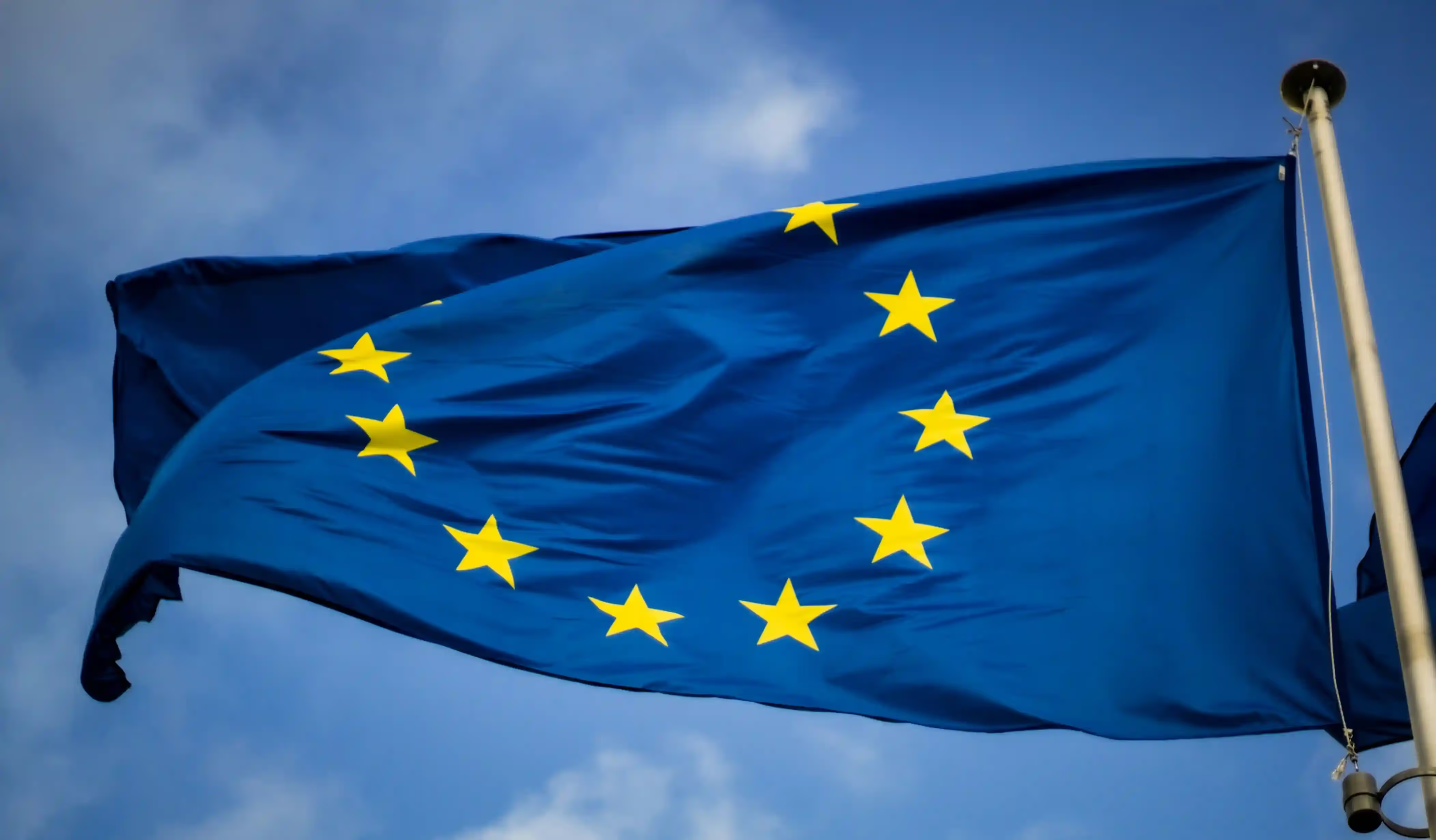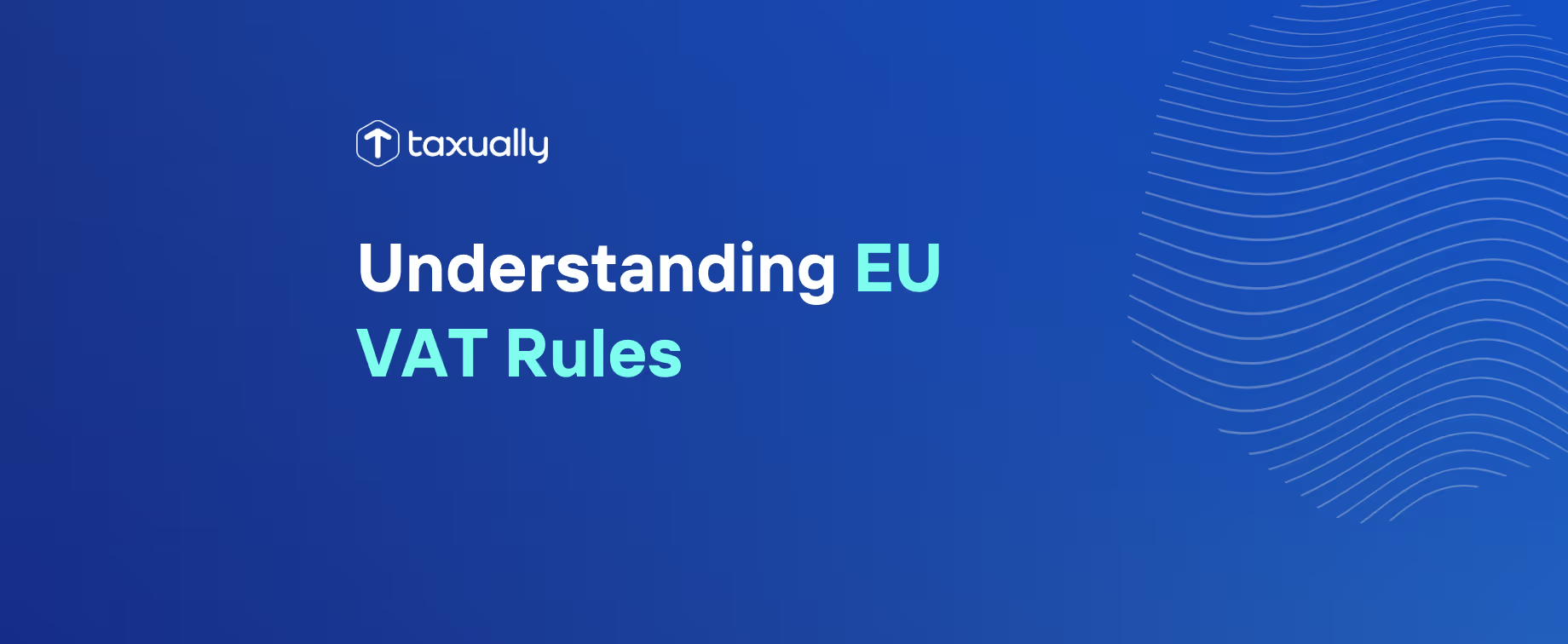Key takeaways
- The EU VAT Directive is the basis for establishing a harmonized and uniform Value Added Tax (VAT) system across the European Union.
- Rates range from 17% to 27%, with additional reduced, super-reduced, zero rate, and exemption rates available in certain circumstances.
- Cross-border transactions require a careful understanding of varying laws among member states. Businesses can use tailored compliance solutions to ensure accuracy and avoid penalties.
The EU VAT system can be complicated and frustrating for businesses operating across borders. But like it or not, it's something every EU seller has to get their head around. With varying rates, exemptions, and directives, understanding EU VAT rules is essential for ensuring compliance and avoiding penalties. This post aims to demystify EU VAT rules and provide a comprehensive overview of the key aspects businesses should be aware of.

EU VAT Directive: The foundation of VAT rules
The EU VAT Directive, also known as the EU VAT Code, serves as the foundation for VAT regulations within the European Union. It aims to harmonize VAT systems among member states and establish a range for VAT rates, allowing for a more streamlined and efficient taxation process.
The Directive’s primary objective is to ensure that VAT rates remain within a certain range, enabling stability and consistency across the EU VAT area.
History of VAT Directives
The history of VAT Directives can be traced back to the First Directive, which sought to:
- Simplify tax calculations.
- Neutralize indirect taxation for competition.
- Replace the multi-level cumulative indirect taxation system in the EU member states with a more straightforward approach.
Here's an overview of the key milestones in the development of the EU VAT Directive:
EEC establishment: The EEC was formed by the Treaty of Rome in 1957, with the objective of creating a common market among its founding members (Belgium, France, Germany, Italy, Luxembourg, and the Netherlands). However, at this early stage, VAT was not introduced, and national indirect taxes were still applied.
Introduction of VAT: In the early 1960s, the EEC began to explore the possibility of introducing a common VAT Europe system to replace the various national consumption taxes. The first VAT Directive, known as the "First Directive" (67/227/EEC), was adopted in 1967 and laid the groundwork for the harmonization of Value Added Tax systems in member states.
VAT rate harmonization: Over the years, the EU issued several directives to harmonize VAT rates across member states. However, it allowed some flexibility in setting standard and reduced rates. The goal was to prevent distortion of competition within the common market.
Single market program: The Single European Act, signed in 1986, aimed to complete the internal market by 1992. This involved further harmonization of VAT and the removal of border controls for trade in goods.
Transitional arrangements: With the accession of new member states, transitional arrangements were often put in place to help them adapt to the EU VAT system gradually.
Ecommerce directive: In 2002, the EU introduced the E-Commerce Directive (2002/38/EC) to address the challenges posed by digital transactions and cross-border e-commerce activities.
Modernization and simplification: The EU periodically reviewed and updated the VAT system to adapt to changing economic and technological landscapes and to simplify compliance for businesses. Several VAT packages were introduced for this purpose, such as the "VAT Package" in 2010 and the "VAT Digital Single Market Package" in 2017.
Brexit implications: The UK's decision to leave the EU had implications for VAT as it led to the need to reevaluate VAT rules concerning goods and services trade between the UK and the EU.
Key principles of the EU VAT system
The EU VAT system operates on several key principles, including:
- The destination principle, which specifies that VAT is paid to the government of the country where the final consumer resides.
- Coordinated administration.
- The allowance for varying rates and exemptions.
Coordinated administration of the Value Added Tax system is managed by the European Commission, which establishes the rules and regulations. Additionally, the EU permits a maximum of two reduced rates and allows for exemptions from VAT to be applied to certain goods and services, providing flexibility for member states.
Value Added Tax rates in European Union countries

VAT rates within the European Union vary significantly, with EU VAT rates ranging from 17% to 27%. Each member state is required to have a standard rate and a reduced rate for specific goods and services, allowing for variations in taxation based on the type of transaction and the country involved. As a result, businesses operating within the EU must pay VAT according to these rates.
This flexibility enables member states to tailor their VAT rates to suit their economic needs and account for regional differences in the consumption of goods and services.
Standard VAT rate
The standard VAT rate in the European Union must be at least 15% for most goods and services, which is considered the minimum standard VAT rate. This ensures that there is some level of consistency across the EU, while still allowing for variations based on individual member state requirements.
The standard rate of 21% is applied in most European Union countries, with Hungary having the highest rate at 27% and Luxembourg possessing the lowest at 17%.
Reduced VAT rate
In addition to the standard VAT rate, EU member states are allowed to apply reduced VAT rates to specific goods and services listed in Annex III of the EU VAT Directive, with a minimum rate of 5%. These reduced rates can be applied to a variety of goods and services, such as:
- e-books
- domestic fuel
- clothing
- female hygiene products
The implementation of reduced rates allows member states to account for different economic and social factors when setting their VAT rates.
Additional and special VAT rates in the EU
Aside from the standard and reduced VAT rates, the European Union also has three additional and special VAT rates: super-reduced rates, zero rates and exemptions, and parking rates. These additional rates provide further flexibility for member states when determining taxation levels for specific goods and services, allowing for a more tailored approach to VAT collection.
Super-reduced VAT rates
Super-reduced VAT rates are applied to certain goods and services in specific EU countries, with rates lower than 5%. These rates offer even greater flexibility for member states when setting taxation levels for specific transactions.
Zero Rates and exemptions
Zero rates and exemptions apply to certain transactions, allowing suppliers to deduct input VAT or be exempt from VAT altogether. The distinction between goods and services exempt from VAT and those subject to 0% VAT is crucial, as those exempt are not eligible for input VAT reclaim on business purchases, whereas those subject to 0% VAT are. Understanding the goods and services tax implications is essential for businesses to navigate these regulations effectively.
Parking rates
Some EU countries apply this VAT rate to specific supplies of goods and services not included in Annex III of the VAT Directive. Those countries are permitted to continue using a reduced VAT rate on these products and services, rather than the standard VAT rate, as long as those reduced VAT rates don’t fall below 12%.
VAT exemptions and their impact
VAT exemptions can have a significant impact on both businesses and consumers by altering the tax burden on specific goods and services. Certain activities, such as medical and dental care, social services, and education, are exempt from VAT under the EU VAT Directive. This exemption also applies to most financial and insurance services, as well as medical equipment, which are considered acts in the public interest. This can lead to reduced costs for consumers and businesses, promoting accessibility and affordability for essential goods and services.
However, the EU Commission aims to reduce exemptions for a more consistent and streamlined indirect tax system, as exemptions can create distortions in the market and lead to complexities in VAT determination and compliance. This ongoing effort to refine and improve the EU VAT system highlights the importance of businesses staying informed and adapting to changes in VAT rules and regulations.
Cross-border transactions and VAT determination
Determining VAT rates for cross-border transactions can be complex due to varying laws and rules among member states. This complexity poses a challenge for global ecommerce businesses, as they need to ensure compliance with each country’s specific VAT regulations while also accounting for differences in rates and exemptions. The distance sales treatment within the European Union VAT system permits vendors to use place of supply regulations for determining which member state collects the VAT.
While this treatment simplifies VAT determination for many cross-border transactions, it's crucial for businesses to remain vigilant and up-to-date on the ever-changing landscape of EU VAT rules. Failure to comply with these rules can result in significant penalties and fines, emphasizing the importance of understanding and adhering to the VAT regulations applicable to each specific transaction and country.
VAT compliance solutions for businesses
To help businesses negotiate the complexities of EU VAT rules, VAT compliance solutions such as those offered by Taxually provide services and software tailored to specific countries and transactions. These services and tools are designed to assist businesses in ensuring compliance with VAT regulations, reducing the risk of penalties and fines.
By utilizing VAT compliance solutions like Taxually's, businesses can:
- Focus on their core operations.
- Outsource the often time-consuming and complex task of managing VAT obligations.
- Access valuable resources and support.
- Remain informed and up-to-date on the latest Value Added Tax rules and regulations applicable to their operations.
EU VAT area and its implications
The EU VAT area is a territory comprising all European Union member states and certain other countries adhering to the European Union’s (EU) regulations on VAT. This area has significant implications for cross-border transactions and VAT determination, as businesses operating within the EU VAT area must comply with the specific VAT rules and regulations of each member state involved in the transaction.
Conclusion
The EU VAT Directives have played a significant role in fostering a more integrated and uniform VAT system within the EU, promoting cross-border trade and economic cooperation. By staying informed, utilizing VAT compliance solutions, and understanding the implications of the EU VAT area, businesses can ensure compliance, avoid penalties, and thrive within the European Union.
Do you need help with your VAT compliance? Book a free call with one of our VAT experts to find bespoke solutions for your business, optimize your VAT costs, and reach millions of new potential customers.
Frequently asked questions
New Year's Day - 1/1/2024Memorial Day - 5/27/20244th of July - 7/4/2024Labor Day - 9/2/2024Thanksgiving Day - 11/28/2024Day after Thanksgiving - 11/29/2024Christmas Eve - 12/24/2024Christmas Day - 12/25/2024
How does VAT work between EU countries?
Businesses selling goods to another EU country will not need to charge VAT, provided the customer has a valid EU VAT number.
What is exempt from VAT in the EU?
The sale of certain goods and services in the EU, such as education, healthcare, financial services, and intra-EU supplies, may be exempt from VAT.
Supplies related to activities in the public interest, most financial and insurance services, and certain supplies of land and buildings are also exempt from VAT.
What is the purpose of the EU VAT Directive?
The EU VAT Directive aims to create a harmonized system of Value Added Taxes (VATs) within the European Union by ensuring that the applicable VAT rates remain within a predetermined range.
This system is designed to ensure that businesses in the EU are not subject to different VAT rates in different countries, which could create an unfair competitive advantage for some businesses. It also helps to ensure that businesses are not subject to double taxation.
What are the standard and reduced VAT rates in the European Union?
The standard VAT rate in the EU is at least 15%, while reduced rates can be applied to certain goods and services with a minimum of 5%.
This means that businesses in the EU must charge a minimum of 15% VAT on their goods and services, but can charge a reduced rate as low as 5% on certain items.



















